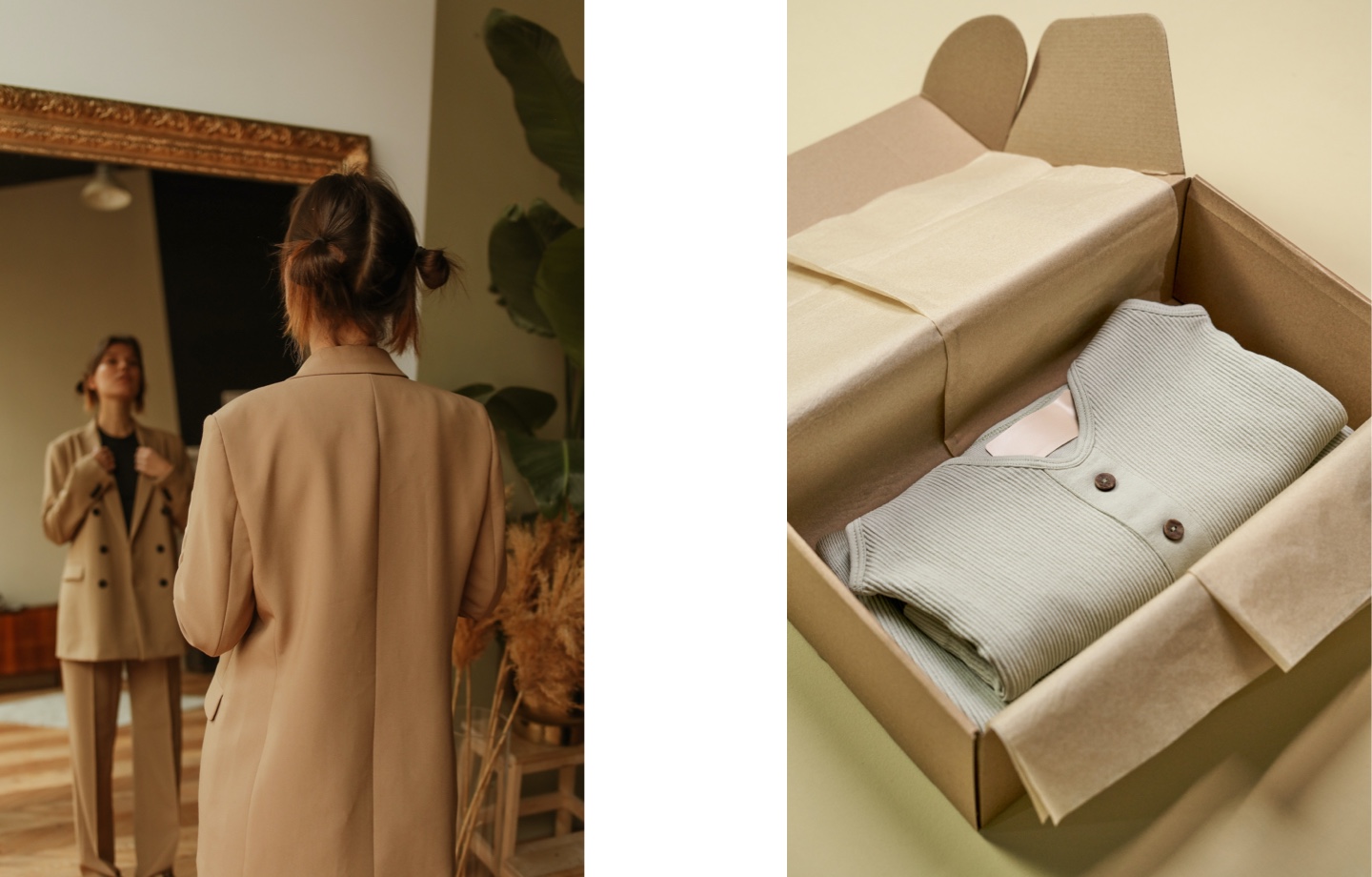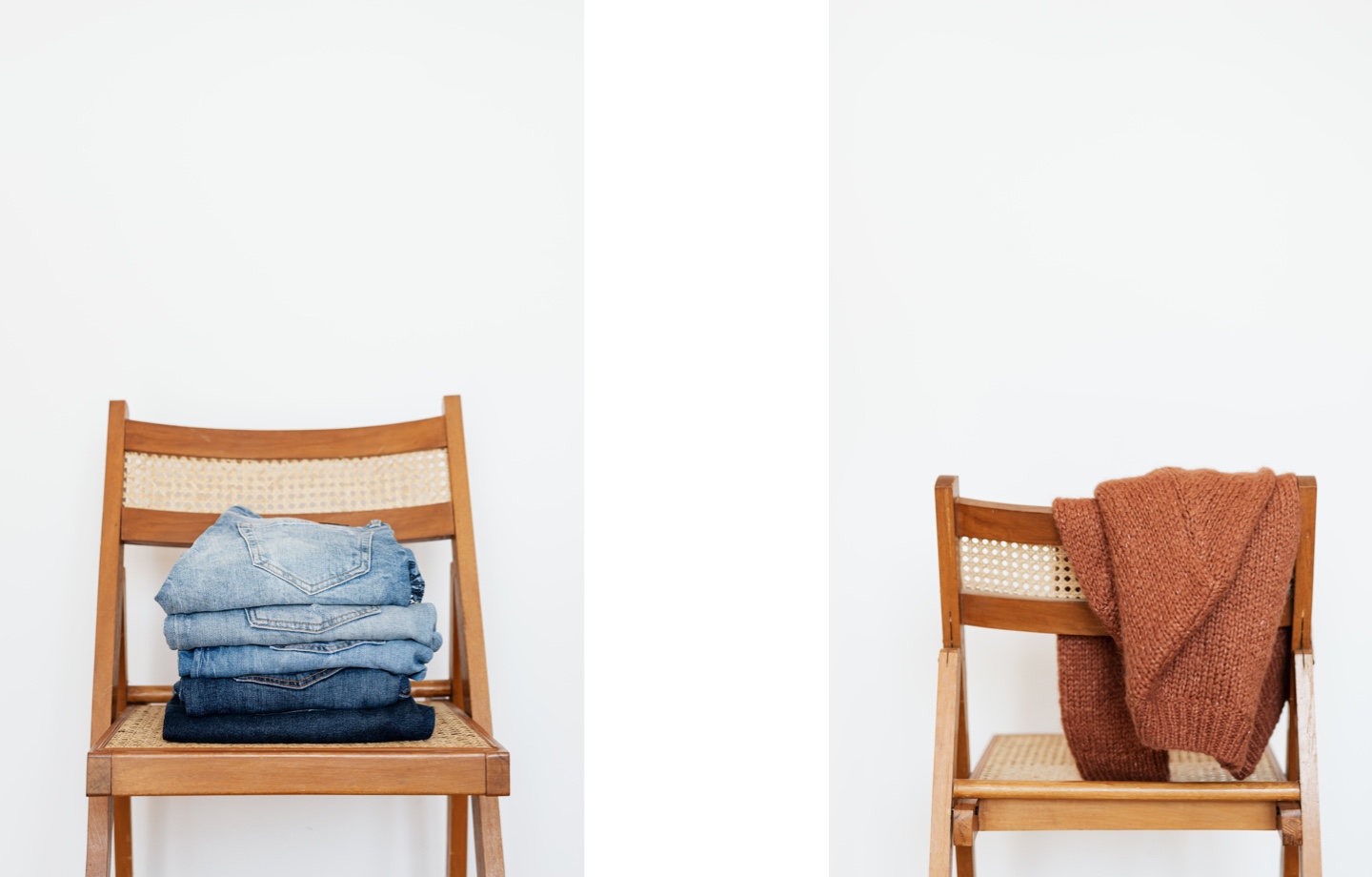Clothing rental companies help reduce consumption, but the industry has a long way to go until it’s as environmentally friendly as it claims.
Show off in designer brands, rarely wear the same outfit twice, and become known as the stylish one in your friend group — all while supporting a sustainable fashion economy. Clothing rental companies market themselves as a green option for the modern fashionista — but are leaders like Rent the Runway, Armoire, and Nuuly as eco-friendly as they lead consumers to believe?
Fashion rental companies offer name-brand gowns, tops, jewelry, and even handbags for those looking to wear, but not buy. This model of shopping, in which consumers rent, wear, and return, is touted as a way for the style-savvy to stay on trend or don a wow-worthy outfit to a special event without dropping a fortune. (Items from clothing rental brands are available at a steep discount.)
Bonus points, renters are bucking the fast fashion industry by keeping clothing out of landfills. On the surface, clothing rental companies seem like an innovative solution to the environmental impact of the garment industry.
The fashion industry produces between two to eight percent of all global carbon emissions, and textile dyeing is the second largest polluter of water globally. It also takes around 2,000 gallons of water to make a typical pair of jeans.
Not only that, the average piece of clothing is worn only seven to 10 times before it’s tossed, a major indicator of today’s accelerated trend cycle and the growing impact of fast fashion. Every second, the equivalent of one garbage truck of textiles is landfilled or burned. And according to the Environmental Protection Agency, landfills received 11.3 million tons of textile waste in 2018, equivalent to about 81.5 pounds of clothing per person per year in the U.S.
Washing clothes made of synthetic materials can even cause microplastics — tiny particles of plastic material — to shed from your clothing, eventually ending up in oceans and rivers where it negatively affects marine life and ecosystems.

Read more: How Sustainable Fabrics Reduce Microplastics
In comparison, fashion rental companies help consumers avoid the pipeline from production to consumption to landfill, but there are still factors to consider when measuring the environmental price of renting clothes.
One study found that transportation emissions play a large role in the overall carbon rating of fashion rental groups, going so far as to say that buying and throwing away a pair of jeans is better for the environment than renting a pair.
There’s also the environmental cost of dry cleaning or laundering clothing post rental to account for — which produces its own set of emissions. Common dry cleaning chemicals like perchloroethylene are associated with environmental and human health risks such as water, soil, and air contamination, liver and kidney damage, respiratory and skin issues, nausea, drowsiness, dizziness, and more.

Read more: 4 Green Alternatives to Dry Cleaning
For its part, Rent The Runway appears to be making efforts to operate in a more sustainable way, although that’s not the case for all rental companies. The brand uses biodegradable, fragrance-free detergents, and a study conducted by the company estimates that their business displaced the production of 1.3 million new garments since 2010, leading to savings of 67 million gallons of water, 98.6 million kWh of energy, and 44.2 million pounds of CO2 emissions over the past decade. It also plans to reduce its emissions to net zero by 2040.
Without a doubt, fashion rental companies have a responsibility to monitor and reduce emissions at every step in their supply chain, but many believe that extending the life of clothing has a significantly positive impact on the planet compared to consistently buying and tossing clothing to make room for the latest trend.
One report found that extending the life of an article of clothing by even an extra nine months reduces its carbon, water, and waste footprint by around 20 to 30 percent, and cuts the cost of resources used to supply, launder, and dispose of clothing by 20 percent.
However, some experts believe the fashion industry’s adverse environmental impact is ingrained in its business model. A report by McKinsey Sustainability states that shorter production lead times enable brands to produce constantly: “Zara offers 24 new clothing collections each year; H&M offers 12 to 16 and refreshes them weekly.”
And one Harvard Business Review contributor writes that “Because it is hard to make a better performing or more efficient blouse, handbag, or pair of socks, to motivate consumption, the industry pushes change. Not better — just different, cheaper, or faster.”

Read more: 6 Sustainable Fashion Books We Love
Clothing rental or even thrifting can help curtail overproduction, but it’s down to individual consumer choice to shop sustainably. If you’re renting, try doing so only for special occasions or monthly to bring down transportation emissions.
If you’re buying, shop second hand first, invest in well-made, long-lasting staples, and pay attention to clothing material. Organic textiles have a much smaller environmental impact than synthetics. Buy infrequently and research a brand’s sustainability efforts before adding to cart. Sites like Good on You help rate popular fashion brands and are a useful tool for eco-aware consumers.
There are no perfect answers — short of not buying clothes at all. But if we all make an effort to shop consciously, take care of our clothes, and wear them for a long time, we can collectively lessen the fashion industry’s impact on the planet.
Have feedback on our story? Email [email protected] to let us know what you think!

Shop Pillows
The Essential Organic Pillow Collection
Gentle, breathable, non-toxic support.







